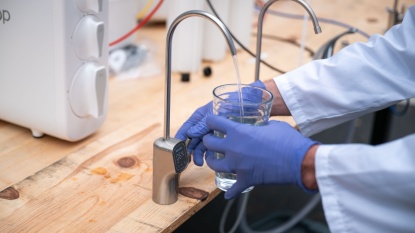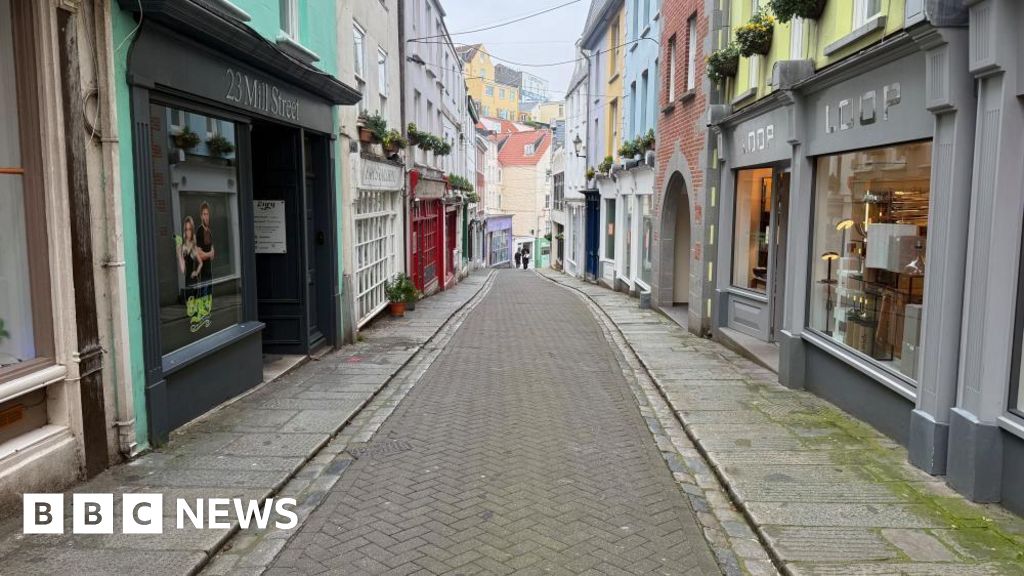Officials launch state’s first Drinking Water Action Plan – Alexandria Echo Press

Minnesota’s Drinking Water Action Plan: A Framework for Achieving Sustainable Development Goals
Executive Summary
The state of Minnesota has launched its first-ever Drinking Water Action Plan, a 10-year strategic framework designed to protect drinking water from source to tap. This initiative directly addresses the principles of the United Nations Sustainable Development Goals (SDGs), particularly SDG 6 (Clean Water and Sanitation). The plan was developed by the Minnesota Department of Health (MDH) in response to a legislative directive and incorporates extensive input from partner agencies and community stakeholders. It provides a comprehensive strategy for managing both legacy contaminants and emerging threats, ensuring the long-term health and resilience of the state’s water resources and communities.
Strategic Alignment with SDG 6: Clean Water and Sanitation
The Drinking Water Action Plan is a direct implementation of the targets outlined in SDG 6, aiming to ensure the availability and sustainable management of water for all Minnesotans. The plan’s five primary goals reflect a commitment to integrated water resources management (Target 6.5) and community participation (Target 6.b).
- Protect sources of drinking water: Aligns with Target 6.3 by mitigating pollution from contaminants such as arsenic, nitrate, and PFAS.
- Establish resilient drinking water infrastructure: Supports Target 6.4 by ensuring the sustainable supply of freshwater through robust and modern systems.
- Ensure safe tap water: Directly addresses Target 6.1 by working to achieve universal and equitable access to safe and affordable drinking water.
- Anticipate and manage emerging risks: Contributes to Target 6.3 by proactively identifying and addressing new threats to water quality.
- Engage partners: Fulfills Target 6.b by strengthening the participation of local communities and stakeholders in water management.
The plan places significant emphasis on addressing inequities, a core principle of the SDGs. Key challenges identified include:
- Providing support for small water systems and the more than one million residents relying on private wells, who face disproportionate challenges in ensuring water safety (Target 6.1).
- Closing gaps in protection and resource allocation highlighted by shifts in land use and an improved understanding of contaminants.
Contributions to SDG 3: Good Health and Well-being
By safeguarding drinking water quality, the plan makes a direct contribution to SDG 3. The initiative’s focus on managing a range of contaminants is critical to fulfilling Target 3.9, which aims to substantially reduce illnesses and deaths from water pollution.
- Legacy Contaminants: Continued management of well-known threats such as arsenic, nitrate, and lead.
- Emerging Contaminants: Proactive strategies to address newer threats like per- and polyfluoroalkyl substances (PFAS).
- Workforce Development: Investing in the future water operator and well contractor workforce to maintain the human infrastructure necessary for public health protection.
Supporting SDG 11: Sustainable Cities and Communities
The plan reinforces the objectives of SDG 11 by focusing on the creation of resilient and sustainable community infrastructure. Key components include building public water system resiliency and reducing the impacts of flooding, which aligns with Target 11.5 concerning disaster risk reduction. Upgrading and modernizing data systems will further enhance the capacity for effective management and planning for sustainable community water supplies.
Embodying SDG 17: Partnerships for the Goals
The development of the Drinking Water Action Plan exemplifies the collaborative approach championed by SDG 17. The MDH led a multi-stakeholder process that brought together a wide array of partners to ensure policy coherence for sustainable development (Target 17.14).
- State Agencies: Minnesota Department of Agriculture, Minnesota Department of Natural Resources, Minnesota Pollution Control Agency, and the Minnesota Board of Water and Soil Resources.
- Public Authorities: Minnesota Public Facilities Authority and the Metropolitan Council.
- Academic and Civil Society Partners: University of Minnesota Water Resources Center, Humphrey School of Public Affairs, Freshwater, and Clean River Partners.
This partnership was extended to the public through community meetings held across the state, ensuring that local priorities and concerns were integrated into the final plan.
Implementation and Future Outlook
The Drinking Water Action Plan is a dynamic, long-term strategy. The MDH and its partners intend to update the plan every two years over the next decade. This iterative process will allow for the tracking of progress, the integration of new information, and adaptation to emerging challenges, ensuring a continued and focused effort to achieve safe, sufficient, and sustainable drinking water for all of Minnesota, in full alignment with the Sustainable Development Goals.
Sustainable Development Goals (SDGs) Addressed in the Article
SDG 6: Clean Water and Sanitation
- The entire article is centered on Minnesota’s “Drinking Water Action Plan,” which aims to protect drinking water from “source to tap.” This directly aligns with the core objective of SDG 6 to ensure the availability and sustainable management of water and sanitation for all. The plan addresses threats from contaminants like arsenic, nitrate, lead, and PFAS, and focuses on ensuring safe tap water for everyone in Minnesota.
SDG 3: Good Health and Well-being
- The article highlights that the Minnesota Department of Health is leading the plan’s development to enforce the “Safe Drinking Water Act.” The goal of protecting drinking water from harmful contaminants is fundamentally a public health issue. By addressing threats that can cause illness, the plan contributes to ensuring healthy lives and promoting well-being, which is the essence of SDG 3.
SDG 9: Industry, Innovation, and Infrastructure
- The plan explicitly includes the goal to “establish resilient drinking water infrastructure.” It also points out the need for “upgrading and modernizing data systems.” This focus on building resilient and modern infrastructure to support safe water delivery is a direct connection to SDG 9.
SDG 11: Sustainable Cities and Communities
- The article states that “Safe drinking water is essential for communities to thrive.” It also mentions challenges like “building public water system resiliency” and “reducing flooding impacts.” These elements are crucial for making cities and human settlements inclusive, safe, resilient, and sustainable, which is the primary goal of SDG 11.
SDG 17: Partnerships for the Goals
- The development of the Drinking Water Action Plan is described as a highly collaborative effort. The article lists numerous partners, including the Minnesota Department of Agriculture, Department of Natural Resources, Pollution Control Agency, and academic institutions like the University of Minnesota. It also mentions gathering input through “community meetings, surveys and focus group discussions.” This multi-stakeholder approach perfectly embodies the spirit of SDG 17.
Specific SDG Targets Identified
SDG 6: Clean Water and Sanitation
- Target 6.1: By 2030, achieve universal and equitable access to safe and affordable drinking water for all. The article’s focus on ensuring “safe and sufficient drinking water for everyone, everywhere in Minnesota,” and its specific mention of supporting “private well users who face unfair challenges,” directly relates to this target.
- Target 6.3: By 2030, improve water quality by reducing pollution, eliminating dumping and minimizing release of hazardous chemicals and materials. The plan’s goal to protect water from threats like “arsenic, nitrate and lead” and “emerging contaminant risks” such as PFAS aligns with this target.
- Target 6.b: Support and strengthen the participation of local communities in improving water and sanitation management. The article details how the plan was developed with input gathered through “community meetings, surveys and focus group discussions” in various cities, demonstrating a commitment to this target.
SDG 3: Good Health and Well-being
- Target 3.9: By 2030, substantially reduce the number of deaths and illnesses from hazardous chemicals and air, water and soil pollution and contamination. The entire plan is designed to mitigate health risks from contaminated drinking water, thereby contributing to this target.
SDG 9: Industry, Innovation, and Infrastructure
- Target 9.1: Develop quality, reliable, sustainable and resilient infrastructure… to support economic development and human well-being. The plan’s goals to “establish resilient drinking water infrastructure” and “upgrading and modernizing data systems” are direct actions toward achieving this target.
SDG 11: Sustainable Cities and Communities
- Target 11.5: By 2030, significantly reduce the number of deaths and the number of people affected and substantially decrease the direct economic losses relative to global gross domestic product caused by disasters, including water-related disasters, with a focus on protecting the poor and people in vulnerable situations. The plan’s emphasis on “building public water system resiliency” and “reducing flooding impacts” addresses this target by preparing communities for water-related challenges.
SDG 17: Partnerships for the Goals
- Target 17.17: Encourage and promote effective public, public-private and civil society partnerships, building on the experience and resourcing strategies of partnerships. The article extensively lists the partners involved in creating the plan, from state agencies to universities and non-profits, showcasing a multi-stakeholder partnership in action.
Indicators for Measuring Progress
Implied Indicators
- For Target 6.1: The article mentions “more than 1 million Minnesotans who rely on a private well.” An implied indicator is the proportion of the population, particularly private well users, using safely managed drinking water services. Progress would be measured by a reduction in the number of people facing challenges with their private wells.
- For Target 6.3: The identification of specific threats like “arsenic, nitrate, lead” and “PFAS” implies that indicators would be the measured concentration levels of these specific contaminants in drinking water sources. The goal would be to see these levels decrease over time.
- For Target 9.1: The goal of “upgrading and modernizing data systems” and building “resilient drinking water infrastructure” suggests an indicator related to the investment in and completion of infrastructure upgrade projects.
- For Target 17.17: The article states that MDH will “update the plan every two years over the next 10 years to show progress.” This regular update process serves as an indicator of the continued functioning and effectiveness of the multi-stakeholder partnership established to implement the plan.
Summary of SDGs, Targets, and Indicators
| SDGs | Targets | Indicators (Mentioned or Implied in the Article) |
|---|---|---|
| SDG 6: Clean Water and Sanitation |
6.1: Achieve universal access to safe drinking water. 6.3: Improve water quality by reducing pollution. 6.b: Support local community participation in water management. |
– Proportion of the population (especially the 1 million private well users) with access to safe drinking water. – Measured concentration levels of contaminants like arsenic, nitrate, lead, and PFAS in water sources. – Documented community engagement through meetings, surveys, and focus groups. |
| SDG 3: Good Health and Well-being | 3.9: Reduce illnesses from water pollution and contamination. | – (Implied) Reduction in waterborne illnesses linked to identified contaminants. |
| SDG 9: Industry, Innovation, and Infrastructure | 9.1: Develop quality, reliable, and resilient infrastructure. | – Progress on “upgrading and modernizing data systems” and establishing “resilient drinking water infrastructure.” |
| SDG 11: Sustainable Cities and Communities | 11.5: Reduce the impact of water-related disasters. | – Implementation of measures to build “public water system resiliency” and reduce “flooding impacts.” |
| SDG 17: Partnerships for the Goals | 17.17: Encourage effective multi-stakeholder partnerships. | – The list of collaborating partners (state agencies, universities, non-profits). – The commitment to update the plan every two years, showing continued partnership activity. |
Source: echopress.com

What is Your Reaction?
 Like
0
Like
0
 Dislike
0
Dislike
0
 Love
0
Love
0
 Funny
0
Funny
0
 Angry
0
Angry
0
 Sad
0
Sad
0
 Wow
0
Wow
0
















































/environment-climate-change-and-health-(ech)/water-sanitation-hygiene-and-health-(wsh)/landfill-tuvalu-36092.tmb-1200v.jpg?sfvrsn=5c21fe40_1#)

.jpg.webp?itok=0ZsAnae9#)























